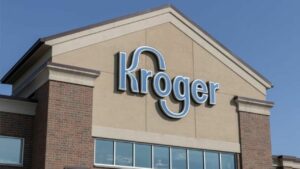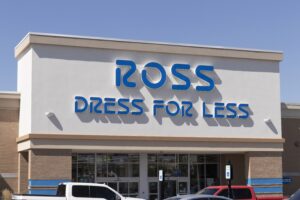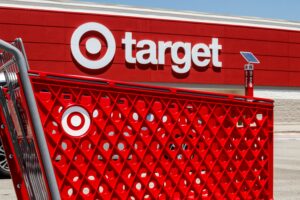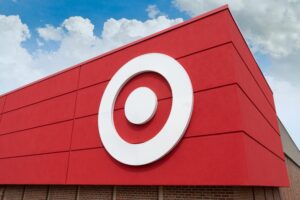
Source: Instagram/@jcrewmens
July 13, 2022
What are retailers finding so tough about customer acquisition?
Through a special arrangement, presented here for discussion is a summary of articles from MarketingCharts, which provides up-to-the-minute data and research to marketers.
Retailers are not faring as well in their acquisition marketing efforts this year as they have in recent years, according to a new study.
Some 57 percent of those responding to a CommerceNext survey said that their acquisition marketing efforts are meeting or exceeding expectations year-to-date. While that’s a solid result, it’s down from 65 percent who said the same last year and 76 percent the year earlier.
In fact, the 114 retailers (incumbent and digital-only) surveyed have the least confidence in acquisition marketing and omnichannel marketing of all their initiatives.
A crucial issue is rising customer acquisition costs (CACs). When retailers were asked to look ahead and identify their greatest challenges to achieving their 2022 e-commerce goals, 61 percent pointed to rising CACs, followed by finding and retaining top talent, 46 percent; and adjusting to the changing landscape of customer data privacy, 33 percent.
Exploring the challenges around acquisition marketing, the top response this year again was diversifying marketing tactics beyond Meta and Google, cited by 45 percent; followed by measuring attribution, 43 percent; and justifying investments in hard-to-measure campaigns, 37 percent.

CommerceNext found that after absorbing two years of eroding KPIs due to rising CACs and CPMs (cost per thousand impressions) on established media channels, retailers spent the last year securing budgets and developing creative for new channels and are now emphasizing diversification.
Fully 69 percent of respondents expect to invest more in TikTok as an acquisition channel this year versus six percent planning to decrease it.
Other areas that look set for a net increase in spending include influencer marketing (57 percent expecting to increase versus eight percent planning a cut), YouTube (43 percent versus five percent, respectively) connected TV/streaming (42 percent and 10 percent, respectively), direct mail (38 percent and 15 percent, respectively), and podcast (25 percent to eight percent, respectively.)
For comparison’s sake, the retailers surveyed were more likely to be cutting (32 percent) their level of investment in Facebook/Instagram than increasing it (27 percent), per the report. Twitter, Snapchat and LinkedIn also saw lower net planned investments.
On a more positive note, fewer respondents this year say that they’re struggling with securing budgets, developing creative and scaling marketing investments.
- What Are Retailers Finding Tough About Customer Acquisition? – MarketingCharts
- The Ascension To Digital Maturity: A Benchmark Report – CommerceNext
- Retailers Worry About Rising Customer Acquisition Costs as Paid Social KPIs Decline – MarketingCharts
- 2022 Digital Trends & Investment Priorities Report – CommerceNext
Discussion Questions
DISCUSSION QUESTIONS: What’s the best path for digital marketers to overcome the customer acquisition cost challenges related to paid social? Where do you expect digital marketers will find the most success diversifying beyond Meta (Facebook/Instagram) and Google?
Poll
BrainTrust
Chuck Ehredt
CEO, Currency Alliance
Patricia Vekich Waldron
Contributing Editor, RetailWire; Founder and CEO, Vision First
Rick Watson
CEO, RMW Commerce Consulting
Recent Discussions







I think most companies don’t understand how to build their brand. They were too dependent on Facebook algorithms to match their ads to the right consumers so they don’t actually know who their audience is, and when they do their offers are not that compelling or differentiated.
When acquisition costs rise, it means that your offer is not compelling at the moment. Some of this is because of macro trends in particular categories (hard lines come to mind) but for others, it is also a realization that some of these VC-backed DTC brands valuations will come back to reality.
And that’s OK too.
This is a tough question if a brand depends largely on acquiring new customers. CAC is certainly rising quickly and for many marketers, the CAC now exceeds contribution margin on the first couple sales. Knowing your real CAC and CLTV is critical to make wise investments, but digital marketers should also be working with other areas of the business to increase CLTV – so they can afford to bid more, as well as build loyalty, so CAC drops on a weighted-average basis. There is no silver bullet, but the answer lies in delivering value that customers recognize, so they don´t have to be re-acquired in the first place.
This is probably going to seem obvious coming from me. The only answer is to be remarkable: to do something highly customer-relevant, truly unique and memorable that customers are willing to talk about. In a world of abundance and distraction if you aren’t remarkable you’re almost certain to be ignored. If you can’t break through the noise in the first place you have no chance of meaningful engagement. Too much of today’s marketing relies on interruption or bribery, which is expensive and typically doesn’t actually create loyalty and remarkability. Plus the marketing toll-booth operators (Meta, Google, TikTok et al.) hold most of the cards. Good luck gaming that system.
With the death of third-party cookies, first-party data has increased in value. Retail media groups are paying more and have to pivot to alternative solutions to capture consumers and consumer data.
I believe keeping your best customers is the best strategy to acquire new ones. It’s all about customer loyalty and lifetime value. Creating exceptional customer moments drives new customer acquisition. The old adage that 20 percent of your customers provide 80 percent of your revenue still holds true, and word of mouth from that 20 percent drives acquisition. It has and always will be much less expensive to keep existing customers than to find new ones, so that’s where a lot of retailers’ attention should be focused.
It all comes down to knowing your customers and building authentic, compelling, and personalized strategies to retain your most loyal fans and determine ways to acquire new customers. Most critically, retailers and brands need to contextualize plans to retain their most loyal customers, especially as acquiring a new customer can cost five times more than retaining an existing customer.
Paid digital marketing campaigns are foundational to having a presence across social media. However the diversified investments will need to shift from the hot and trendy social channels (TikTok, Snapchat, Twitter) to those where Gen Z may not be spending their time. In addition, the most loyal customers, in most cases, end up being the best advocates and brand ambassadors at a micro level on TikTok, Instagram, and other sites.
It will be crucial for companies to leverage the power of authentic storytelling and collaborate with the micro-influencers, who have far more authority and influence than what appears at the surface.
When the rate of change in consumer spending and economies slows, customer acquisition costs go up and having the right value proposition to changing conditions becomes even more crucial as companies go through phases of the business cycle. Those digital marketing toll booth operators, as Steve Dennis calls them, have brands playing musical chairs as they continue to dictate how the game is played. Expanding efforts to retail media networks offered by Walmart, Target, CVS, etc., can undermine the excessive influence of Google, Meta, and TikTok.
Retention is the new acquisition. Retailers have relied too long on digital tactics instead of developing (and delivering) differentiated brand promise through a variety of touch points, experiences and offerings.
Customer acquisition all goes back to the basics. Develop a clear plan that communicates the basics of great business and customer retention that is built upon the keys of product, place, promotion and place. All too often we focus on complex AI or minor issues that have nothing to do with addressing these basics. This includes eliminating out of stocks. Leading customer satisfaction with great pricing and well-communicated promotions. Delivering the right products to your customers, all of the time. This includes no exceptions to minimize customer returns, packaging issues, pricing satisfaction, and availability. Any successful retailer focuses on these and becomes even more successful.
Evaluating the effectiveness of a campaign holds the utmost importance to check the viability of a product. Measuring attribution has become a challenging task with the present restrictions over the use of tracking cookies. I feel the presence of brick-and-mortar stores, is very important for customer acquisition. The digital presence cannot counter the way physical retail stores provide personalized experiences for their customers. Pop-ups, small and big format stores comparatively drive more targeted audiences. However, I also agree with the fact that influencer marketing has become the next big thing. Undeniable, social media presence holds great importance to catch up with today’s pace. So, leveraging both physical and digital presence can bring off desired results. Additionally, with the peaked customer acquisition costs, brands must focus on “retaining” the customers. Ultimately, the main aim is to deliver customer satisfaction and increase profitability.